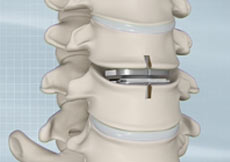Surgical Treatments
Spinal Deformity Surgery
The spine or backbone provides stability to the upper part of the body. It helps to hold your body upright. It consists of several irregularly-shaped bones called vertebrae appearing in a straight line.
Spinal Fusion
Spinal fusion is the surgical technique of combining two or more vertebrae. A fusion of the vertebrae involves the insertion of secondary bone tissue obtained either from an autograft
Total Disc Replacement Surgery
Total disc replacement is a surgical procedure in which the diseased or damaged intervertebral discs of the spinal column are replaced with an artificial disc to restore the normal function and movement of the spine.
Spinal Decompression
Spinal decompression is a treatment to relieve pressure on one or many “pinched nerves” in the spinal column. It can be achieved either surgically or by non-surgical methods.
Scoliosis Treatment
Scoliosis is the abnormal curvature of the spine giving the spine an “S” or “C” shape. Scoliosis can occur at any age and is more common in girls than boys.
Lumbar Fusions
Spinal fusion, also called arthrodesis, is a surgical technique used to join two or more vertebrae (bones) within the spine. Lumbar fusion is the procedure of fusing the vertebrae in the lumbar portion of the spine (lower back).
Lumbar Artificial Disc Replacements
Lumbar artificial disc replacement is a surgical procedure employed to remove and replace a damaged or worn out disc in the lumbar or lower part of your spine that has become painful and debilitating with an artificial or synthetic disc.
Posterior Lumbar Fusions
The lower back or lumbar region consists of 5 vertebral bones that surround and protect the spinal cord. Wear and tear, trauma, disease or deformity can destabilize the spine and compress or damage the lumbar spinal cord and nerves that run between the vertebrae.
Spondylolisthesis Reduction & Fusion
Spondylolisthesis is a condition characterized by the displacement of one vertebra over the other. Excessive displacement may compress the surrounding spinal nerves and cause pain.
Transforaminal Lumbar Interbody Fusion (TLIF)
Transforaminal lumbar interbody fusion (TLIF) is a type of spinal fusion procedure in which bone graft is placed between the affected vertebrae in the lower back (lumbar) region through an incision on the patient’s back.
Lumbar Micro Discectomy
Microdiscectomy is a surgical procedure employed to relieve the pressure over the spinal cord and/or nerve roots, caused by a ruptured (herniated) intervertebral disc.
Lumbar Laminectomy
Lumbar laminectomy is a spinal surgery to relieve excess pressure on the spinal cord or nerves within the spinal canal in the lumbar or lower back region.
Cervical Disc Replacement
The cervical spine is located in the neck region and consists of seven bones arranged one on top of the other. Cushioning tissue called vertebral discs located between the vertebrae act as shock absorbers, allowing easy movement of the neck.
Anterior Cervical Discectomy
The vertebrae of the backbone are cushioned by intervertebral discs that act as shock absorbers and allow frictionless movement of your back. It is made up of a soft gel-like center called the nucleus pulposus that is surrounded by a tough outer ring of annulus fibrosus.
Cervical Laminectomy
Degeneration of the facet joints and intervertebral discs results in narrowing of the spinal canal known as spinal stenosis. In addition, the arthritic facet joints become bulkier and consume the space available for the nerve roots.





















